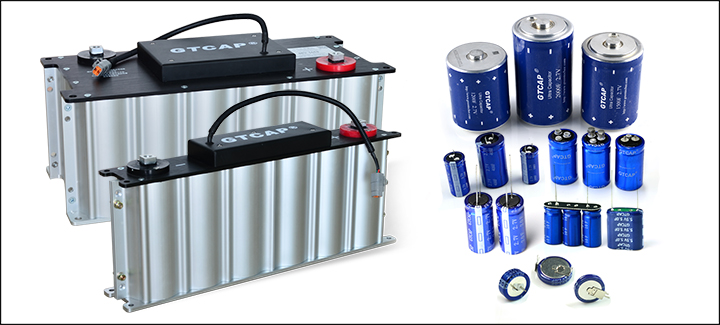Ultracapacitors also known as supercapacitors, electrochemical double layer capacitors (EDLCs) or Electric double-layer capacitors are electrochemical capacitors that have an unusually high energy density when compared to common capacitors, typically several orders of magnitude greater than a high-capacity electrolytic capacitor.
The Ultracapacitors reside in between conventional batteries and conventional capacitors. They are typically used in applications where batteries have a short fall when it comes to high power and life, and conventional capacitors cannot be used because of a lack of energy. EDLCs offer a high power density along with adequate energy density for most short term high power applications. Many users compare EDLCs with other energy storage devices including batteries and conventional capacitor technology.
Each product has its own advantages and disadvantages compared to other technologies as can be seen from the chart below:
|
Part name |
Lead-Acid Battery |
Nickel-admium Battery |
NI-MH Battery |
Li-Ion Battery |
Ultracapacitor |
|
Max.Energy Density (Wh/Kg) |
35 |
45 |
70 |
120 |
5~10 |
|
Max.Power Density (W/Kg) |
200~300 |
400 |
500~800 |
600~1000 |
>10,000 |
|
Cycle life(times) |
200~500 |
500~800 |
300~600 |
500~1000 |
>500,000 |
|
Change time |
7~10hrs |
7~10hrs |
7~10hrs |
7~10hrs |
0.5~200s |
|
Discharge time |
0.5~3hrs |
0.5~3hrs |
0.5~3hrs |
0.5~3hrs |
0.5~200s |
|
Power Conversion Efficiency |
0.7~0.85 |
0.7~0.85 |
0.7~0.85 |
0.7~0.85 |
0.9~0.99 |
|
Safty |
Good |
Good |
Good |
Not good |
Very good |
|
Hazardous Substances |
Lead |
Cadmium |
None |
None |
None |
More information: www.greentechee.com



















